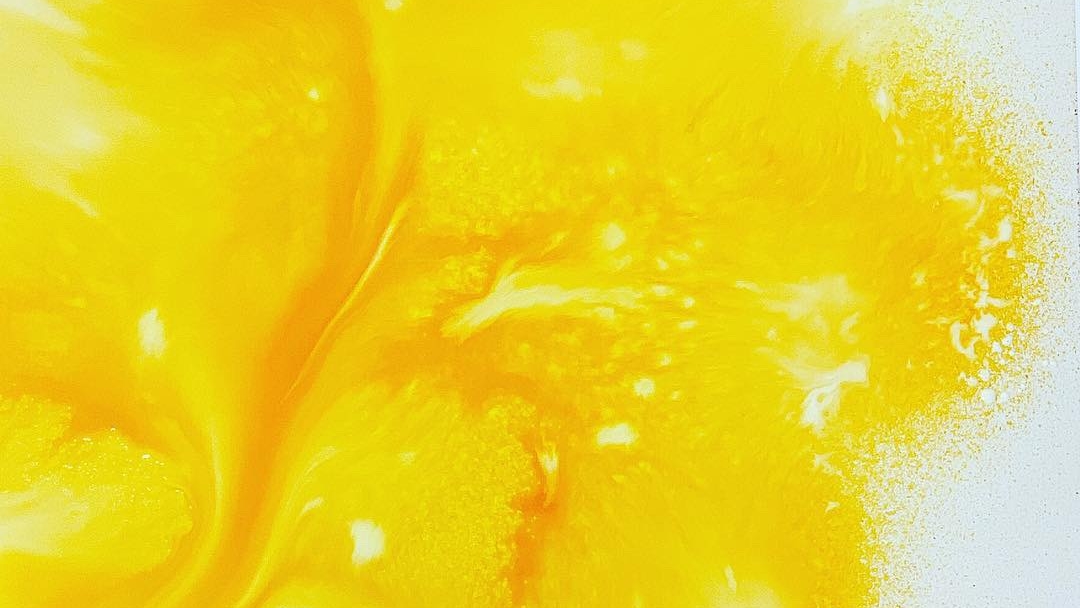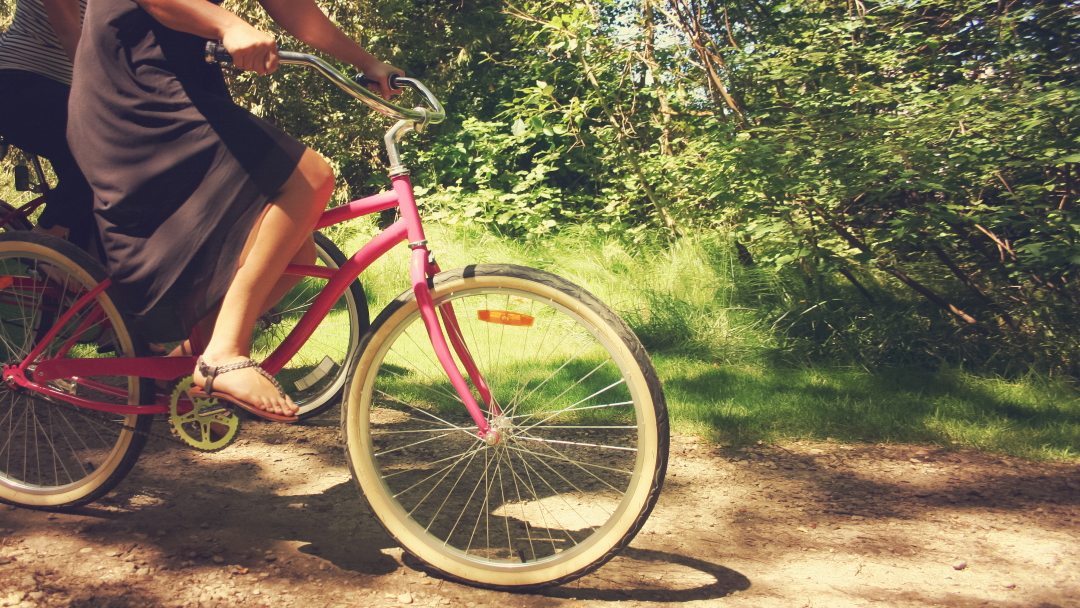Graphic: Painting by Deanna Minich, “Luminous Liver”
The curious aspect of bile is that it has a medical lineage dating back to ancient civilizations. From the ancient Greeks to the 1800s, medicine was highly influenced by a concept known as the humoral theory of health. Tracing back to Hippocrates and Galen, and possibly earlier, it was thought there were four bodily humors a particular temperament was associated with: phlegm (phlegmatic), blood (sanguine), yellow bile (choleric), and black bile (melancholic). Disease, both physical and mental, was attributed to an imbalance of humors. Although modern medicine and psychology may have advanced beyond the humors, the impact on culture and language remains, but the recognition of bile within medicine, at least from what I have observed, has somewhat taken the background rather than the foreground.
Although our ancestral physicians may have lacked our current knowledge, they would have seemed to be correct about the importance of bile. Research points to bile functions beyond just aiding in the digestion of fat, as well as roles that bile acids play in disease pathology. Clinically, I had the opportunity to spend four years during my doctoral research investigating the role of bile in the absorption and metabolism of fatty acids. Additionally, in my functional medicine training as a clinician, talk of bile would surface during the 5R gut healing protocol (“R” for replace), although, I have felt that discussions on stomach acid and pancreatic enzyme insufficiency generally seemed to take on greater emphasis than repleting bile acids in the body.
Not only is bile important in functional medicine as a way to promote healthy digestion, it also has a role as a portal for the exit of biotransformed toxins. Theoretically, an individual with an increased toxic burden due to elevated environmental exposures would need to ensure that they had efficient bile flow to effectively remove conjugated toxins from the liver. Therapeutic administration of bile acid sequestrants like cholestyramine have been shown to be helpful in a case study for the removal of perfluorinated compounds. Recent clinical research published by Dr. Ely at the University of California Davis School of Medicine would suggest that a combination of bile acids and bioflavonoids might be useful in gut-related, toxic-injury conditions such as psoriatic arthritis. Previous research indicates that the presence of bile acids may be important in preventing gut dysfunction from endotoxins.
With the uptick in people following the ketogenic diet (a dietary pattern high in fat and low in carbohydrate), it would seem that bile should get even more attention since it is required for the emulsification and eventual uptake of fat. In fact, one’s ability to do well with this type of dietary approach may, in some way, be associated with their bile production. For those people with poor bile formation and flow, especially for women in mid-life, which has been my clinical experience, it might be worthwhile to evaluate bile to explore what might facilitate its production and function.
Since bile is such an age-old topic through systems of medicine, I thought it would be interesting to investigate it through the functional medicine/physiological/science viewpoint, followed by some suggestions cultivated in the traditional systems of medicine like Ayurveda and Traditional Chinese Medicine (TCM).
The Basics of Bile: Its Synthesis and Function
To start with the basics, bile begins its life in the liver and spends a significant amount of time somewhere between the liver, gallbladder, and gastrointestinal tract, specifically the intestines. Liver cells manufacture bile before it undergoes modification in the bile duct epithelium, and then it is transported to the gallbladder for storage and, ultimately, use. Bile acids are synthesized from cholesterol with the aid of several different enzymes.
The makeup of bile is largely water, at about 95%. The remaining five percent is made up of bile acids, bilirubin, amino acids, enzymes, steroid hormones including estrogen, glutathione, cholesterol, vitamins (especially vitamin D and some of the B vitamins), porphyrins, insulin, and other items, including toxins such as heavy metals, xenobiotics, medications and drugs, and environmental toxins targeted for excretion. There are also electrolytes, including sodium, potassium, chloride, calcium, magnesium, phosphate, sulfate, and bicarbonate. As you excrete more bile acid, bile flow is stimulated. There is also a circadian rhythm to the synthesis and circulation of bile acids.
In total, there are more than 50 species of bile acids in humans, but the main ones include cholic acid and chenodeoxycholic acid (CDCA). Although bile salts and bile acids are frequently used interchangeably, technically bile acids become bile salts upon conjugation with glycine or taurine. The gut bacteria metabolize bile acids to create secondary bile acids, of which there are more than 400 species. After the gut bacteria metabolize them, cholic acid becomes deoxycholic acid and CDCA becomes lithocholic acid. The amount of bile acids making their way into the colon affects the microbiome makeup. Bile acids are reabsorbed in the small intestine and colon to then come back into circulation as part of the enterohepatic circulation, which is a bidirectional pathway.
Bile acids, a key component of bile, are the main emulsifiers of fat. As such, bile ultimately finds its way into the small intestine for this function. When fat enters your small intestine, you secrete CCK (cholecystokinin), which signals your gallbladder to send bile into the small intestine to aid in digestion and absorption.
Although this may be the function of bile most commonly known, there are actually many, many more. Some of the key functions of bile include:
- Aids the immune system through excreting certain immune system signals, such as IgA and inflammatory cytokines
- Elimination of certain hormones and pheromones
- Endogenous ligand (binder to stimulate a signal) for several receptors, including nuclear receptor farnesoid X receptor (FXR), vitamin D receptor, and G protein-coupled receptor TGR5
- Excretion of fat-soluble toxins and other waste, including endogenous substrates
- Modulation of metabolic pathways, including lipid metabolism, glucose metabolism, and insulin sensitivity
- Regulation of tight junction permeability
- Removal of cholesterol
- Signaling molecule and hormone
With so many different functions, it should come as no surprise that problems in the flow, metabolism, or synthesis of bile and/or bile acids could contribute to a variety of diseases.
Problems with bile may stem from dysfunction in the synthesis of bile, an impairment in the secretion, or problems with the flow of bile. The metabolism of bile may become disturbed through problems stemming from the synthesis or conjugation with cholesterol, problems with the membrane transport, issues with the transport between the organs, or problems with the bacterial degradation of bile during the enterohepatic cycling. There may also be malabsorption of the bile acid, leading to higher concentrations in the colon, which may then negatively impact the function of the mucosal cells in the colon. Furthermore, when the concentration of bile acids is too high, it can be toxic and cause problems. Alterations to bile acids are also associated with disease.
The level of bile acids that reach the colon may contribute to functional bowel diseases. Elevated concentrations may contribute to diarrhea, while lower levels may play a role in constipation. In one study on children with functional constipation, the fecal bile acid profile was normal, but there were some who had the 3-sulfate version of CDCA as the dominant fecal bile acid, which could demonstrate a link for some cases.
Additional problems associated with bile beyond poor fat absorption and gallbladder disease include:
- Cholestasis
- Colorectal cancer
- Functional bowel disorders, including chronic diarrhea
- Inflammatory bowel disease
- Metabolic disorders including diabetes, obesity, and cardiovascular disease
- Non-alcohol fatty liver disease
- Vitamin deficiency (especially fat-soluble vitamins)
Improving Bile Flow
As is the thought process in functional medicine, the solution for improving bile homeostasis largely depends on the underlying issue, whether it is a deficiency of bile salts, a problem with metabolism, dysbiosis in the gut, gallbladder issues, or something else. However, there are a few common solutions that have a beneficial impact on overall bile flow. For those with certain conditions, especially those attributed to bile salt deficiency or insufficiency, taking some type of bile salt supplement may help. Bile salt supplementation has been used for non-alcoholic fatty liver disease, primary biliary cirrhosis, cholestatic diseases, familial intrahepatic cholestasis, metabolic disorders, and other liver and gallbladder diseases. Discuss this with your doctor or healthcare practitioner to determine whether your digestive issues stem from a lack of bile or another problem.
Replacing bile salts may be a more conventional approach to aiding in health problems for which bile plays a role, but there are some long-standing traditional cures that help to stimulate bile synthesis and flow. The ancient medicinal traditions of Traditional Chinese Medicine (TCM) and Ayurveda have certain herbs and formulas for liver and digestive care that also target bile. In Ayurveda, most practitioners turn to a category of herbs known as cholagogue, a name that reflects the relationship with bile, for bile health. Cholegogue herbs promote bile flow while another category of herbs, choleretics, increase bile production. Most of these herbs are bitter in taste. Traditional Chinese Medicine has a long history of using animal bile for support of a variety of diseases, including that more directly associated with bile such as digestive and liver problems. Pig, ox, and bear bile are the more commonly used varieties today. Beyond animal biles, TCM likewise uses many herbs in their formulations for bile and liver support, many of which are also cholagogue or choleretics.
Examples of cholagogue and choleretics herbs include:
- Aloe vera
- Artichoke leaf extract
- Barberry
- Burdock
- Chamomile
- Dandelion
- Fenugreek
- Gentiana
- Ginger
- Milk thistle
- Peppermint
- Rhubarb
- Rosemary
- Turmeric
- Vervain
Is there any evidence to validate the use of these herbs beyond the millennia of tradition from both Ayurveda and Traditional Chinese Medicine? Although there is not extensive research into some of these herbs, there is some evidence that validates the benefits of these herbs beyond the anecdotal kind.
Artichoke leaf extract: In one placebo-controlled, double-blind, crossover study, taking an artichoke extract led to a 127.3% increase in bile secretion just 30 minutes later. After an hour, there was a 151.5% increase compared to the initial value. Comparatively, the placebo group experienced a 139.5% increase after 30 minutes, but they experienced no further increase. Artichoke leaf extract can also impact cholesterol levels through increasing excretion of bile acids and thus the excretion of cholesterol.
Curcumin: In another in vitro and mice study, curcumin activated FXR to help to regulate bile acids and mitigate cholestasis. Curcumin has also been found to prevent gallstones, which occur due to precipitation of calcium salts, bilirubin, and cholesterol in bile.
Fenugreek: It can also aid in the excretion of bile acids. In one rat study, there was a dose-dependent impact of fenugreek and the amount of total bile acid levels in the feces. This also helped to reduce lipid accumulation in the liver since more fat was excreted. Another study found that fenugreek and onion, especially in combination, helped to attenuate the formation of gallstones from cholesterol. There was a reduction of the cholesterol saturation index in the bile as well, with the combination of the 2 taking it from 4.14 to 1.38, while onion alone reduced it to 2.33. Another rat study found that in addition to reducing cholesterol in the bile, fenugreek also increased the bile flow rate and an increase in the total bile acid contents, demonstrating a beneficial anti-lithogenic impact.
Milk thistle: This well-known liver and detox aid can also positively impact bile as well. In one study, silymarin (the active component of milk thistle) was found to activate FXR, which regulates the bile action homeostasis, in vitro. In a follow-up mice study, mice who had silymarin had a decreased number of bile acids in the feces and a decrease in the liver, although it was not statistically significant. There was also an impact on the composition of the bile acids.
Rhubarb and gardenia: In one study on TCM, the herbal pair of rhubarb and gardenia provided some protective effects to the liver in rats with induced cholestasis. The synergy of the two herbs provided an enhanced effect compared to the single herb.
These are just a few of the traditional and current herbs used for bile support, as well as liver and digestive aid. Additional herbs with evidence demonstrating a potential benefit to the liver and bile flow include licorice root and jamun fruit.
Diet and Bile
In addition to consuming liver and bile supporting herbs, it is also important to take a look at the overall diet. Having the right protein sources could make a difference. In one study on rats fed a high-fat diet, those who had taurine and/or glycine-rich protein had increased bile acids and thus a reduction in their obesity levels compared to those fed a high-casein diet.
The amount of fat consumed may also impact bile salt synthesis and metabolism. In one small study with only 6 participants, both low-fat and high-fat diets had a lower bile salt synthesis than the control diet, especially that of cholate, although chenodeoxycholate was only impacted by the high-fat diet. Although this study is too small to extrapolate to the broader population, it does demonstrate how fat consumption may alter bile salts, likely due in part to the trigger effect of consuming fat to creating bile salts. The mechanisms would be different in low-fat diets compared to high-fat diets. Consuming diets high in fried foods and fatty foods may also contribute to bile imbalances and gallbladder problems.
Hormones and Bile
Another area that may contribute to bile health is steroid hormones, especially estrogen in women. Although endogenous hormones may not cause too much trouble, exogenous hormones such as that found in birth control and HRT (hormone replacement therapy) may cause issues, since steroid hormones, including estrogen, make up some of the composition of bile. In one study in women with cholelithiasis, those who were postmenopausal had a reduction in their concentration of bile acids except for those who took HRT, who had an increase in bile acids. Subsequently, these women also had higher levels of total and LDL cholesterol than women who did not take hormonal contraception or those who were on HRT. Oral contraceptives and other exogenous hormones also led to a reduction in the calcium ions in serum, bile, and gallstones.
Summary
Although we now know there are more than four areas of health that need to be in balance, maintaining a good bile flow and homeostasis remains a valid component of overall health and wellbeing. If you feel that your digestion is sluggish or you may have some issues with your bile flow, talk to your doctor, nutritionist, Ayurvedic practitioner, TCM practitioner, or another healthcare practitioner about which bile-supportive herbs and other practices you can implement to improve your health. Indeed, many of these methods help to stimulate bile flow and excretion, which in turn have many additional benefits to health. Note that several of these herbs may also interact with medication, which is why it’s essential to have an expert clinician evaluate the whole of what you are taking, including not just pharmaceuticals, but OTC drugs and dietary supplements.






How does one find out which pathway might be impaired? Are there lab tests?
Thanks for the question, Brenda! Yes, yes there are lab tests, which a Functional Medicine practitioner may be trained in, as well as noting symptoms.
Well written article. Thank you Dr. Minich
Nice Article, Thanks for sharing.
Very well articulated and educating article.